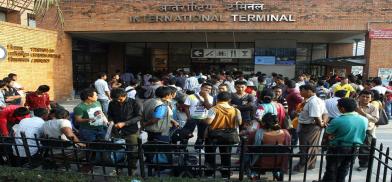Nepal received record $8.08 billion in remittances despite Covid-19 slowdown
Nepal received around a record $8.08 billion in remittances--the highest so far--in the last fiscal (ended in mid-July), recording a 10 percent growth in comparison to the last despite the Covid-19 slowdown

Nepal received around a record $8.08 billion in remittances--the highest so far--in the last fiscal (ended in mid-July), recording a 10 percent growth in comparison to the last despite the Covid-19 slowdown.
Remittances support the country’s economy in a big way and in the last fiscal its accounted for almost 22 percent of the total gross domestic product (GDP). This came despite over half a million workers returned back to the country from abroad due to the disruption caused by the pandemic, reported The Kathmandu Post.
A number of factors contributed to the rise in remittances. First, the increased usage of formal channels for money transfer; Second, cuts in spending abroad as people are saving more money; Third, the rise in dollar valuation. The increase in salaries due to labor shortage in markets also contributed to it.
Millions of people lost their jobs in the domestic market during the repeated months-long lockdowns and in turn, their relatives, who were working abroad, sent money to support their families back.
Restrictions on international travel impacted the number of workers going abroad in 2020-21. Only 166, 698 Nepalis managed to reach their respective work destinations--the lowest in the last 16 years.
Though half a million people returned to Nepal, roughly over 3 million Nepalis are still working abroad, and many of them chose to stay back as host countries have had better a social security net. Gulf countries are popular work destinations among Nepalis. Several countries there offered free Covid-19 vaccines to migrant workers.
Remittances also support the domestic growth in demand by increasing consumption. However, there are also long-term drawbacks of increased reliance on remittances.
“The one thing that will hurt Nepal is that it will not reap the demographic dividend in terms of nation-building in the long term, despite more than 40 percent of the country’s population being young,” Min Bahadur Shrestha, a Nepali economist and former vice-chairman of the Planning Commission, was quoted as saying by The Kathmandu Post newspaper.
The increased migration creates an agricultural labor shortage in the country, making it more reliant on imports. Consumption and demand driven by remittances will fuel imports. In the last fiscal alone, imports recorded a growth of around 28 percent.
(SAM)








Post a Comment